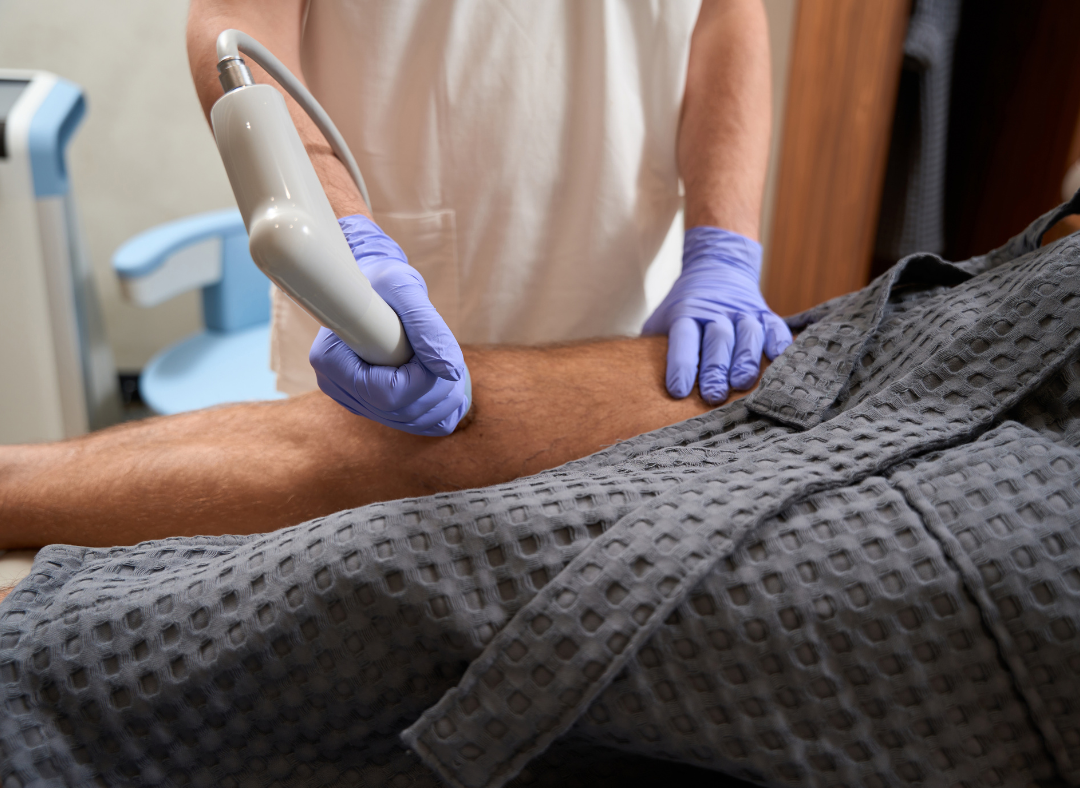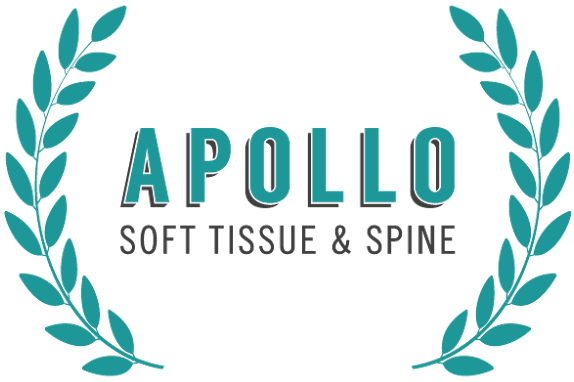Shockwave therapy, a cutting-edge medical treatment, has garnered attention for its effectiveness in addressing a myriad of health conditions without the need for invasive procedures. This blog explores shockwave therapy’s cost, clinical trials, how it enhances blood flow, its applications in treating conditions like erectile dysfunction, muscle pain, nerve pain, etc. and compares it with other treatments.
Shockwave therapy utilizes acoustic waves to promote healing, enhance blood circulation, encourage blood flow and stimulate the formation of new blood vessels. By improving blood flow, this non-invasive treatment option accelerates the healing process in damaged tissues, making it a preferred choice for patients suffering from chronic pain or certain medical conditions.
How Shockwave Therapy Works
At its core, shockwave therapy involves the delivery of low intensity shockwave therapy pulses to the affected area, encouraging the development of blood vessels and improving blood flow. This process is crucial for initiating and accelerating the body’s natural healing mechanisms.
Applications and Effectiveness

Shockwave therapy has proven effective in treating a range of conditions, from musculoskeletal issues to specific health conditions like neck pain or nerve pain. It offers a treatment option that can improve patients’ life by addressing the root cause of painful movement and other related symptoms without the need for oral medications or more invasive treatments.
Understanding the Cost Factors
Different Types of Shockwave Therapy
The shockwave therapy cost can vary significantly depending on the type of technology used. Low intensity shockwave therapy, for example, is often used to treat erectile dysfunction and involves different equipment and expertise than high-intensity shockwave therapy for ed treatments.
Factors Affecting Treatment Cost
- Severity of Condition: The more severe a condition, the more sessions may be required, impacting the overall cost.
- Number of Sessions Required: Most patients will see improvement after a few sessions, but some may need more, affecting the total shockwave therapy cost.
- Practitioner’s Experience and Location: Experienced practitioners in metropolitan areas tend to charge more due to their expertise and the higher cost of living.
- Additional Services Included: Some clinics offer comprehensive packages that include diagnostics and follow-up assessments, which can affect the price.
Breakdown of Treatment Expenses
- Initial Consultation Fees: The first step in a shockwave therapy treatment plan, where the practitioner assesses the patient’s suitability for the treatment.
- Cost per Session: Varies based on the factors mentioned above, with each session contributing to the overall shockwave therapy cost.
- Additional Diagnostic Tests and Assessments: Essential for tailoring the treatment plan to the patient’s specific needs.
Comparison with Alternative Treatments
When evaluating shockwave therapy for ed* against other treatments, it’s crucial to consider several aspects, including effectiveness, cost, side effects, and long-term benefits.
Effectiveness
Shockwave therapy stands out for its ability to promote the healing process by enhancing blood flow and stimulating the formation of new blood vessels. This contrasts with traditional treatments that may only address symptoms rather than the underlying cause. For instance, in the context of treating erectile dysfunction, shockwave therapy aims to restore natural functionality by improving blood circulation, offering a more sustainable solution compared to oral medications, which provide temporary relief without addressing the root cause.
Cost
Initially, the shockwave therapy cost may appear higher than that of oral medications or other non-invasive treatments. However, considering the durability of its effects and the potential reduction in the need for ongoing treatment, shockwave therapy can be more cost-effective in the long term. Unlike invasive procedures, which come with high costs and potential risks such as skin infection or more severe complications, shockwave therapy offers a safer and often more economical choice in the long run.
Side Effects and Risks
Traditional treatments, especially invasive procedures and oral medications, often carry a risk of side effects. Invasive treatments can lead to complications such as infections or prolonged recovery times, while oral medications might cause systemic side effects affecting various parts of the body. Shockwave therapy, by contrast, is non-invasive and has minimal side effects, making it a safer option for most patients. The risk of experiencing pain during or after the procedure is low, and it does not carry the same risk or other specific side effects associated with treatments for any body pain.
Long-Term Benefits
One of the most compelling advantages of shockwave therapy is its potential for long-term benefits. By improving blood circulation and encouraging the healing of tissue, it offers a solution that could lead to sustained improvement in conditions where enhancing blood flow can result in lasting improvements to one’s daily life. This stands in contrast to oral medications or other treatments that require continuous use for maintaining their effects.
When compared with alternative treatments, shockwave therapy presents a unique combination of benefits: it is less invasive, potentially more effective in addressing the underlying causes of certain conditions, and may offer better long-term cost-effectiveness. For patients seeking a treatment option that balances effectiveness with minimal risk, shockwave therapy emerges as a compelling choice, particularly for those looking to avoid the downsides of invasive procedures and the transient benefits of oral medications.
Regional Variances in Pricing
The cost of shockwave therapy can significantly vary from one region to another due to several factors. These discrepancies are often influenced by local healthcare policies, the cost of living, and the availability of specialized practitioners. For instance, areas with a higher concentration of clinics offering shockwave therapy may have more competitive pricing, while locations with fewer providers might see higher costs due to the lack of competition. Additionally, countries with public healthcare systems might subsidize the cost of such treatments, making it more accessible compared to regions where healthcare is predominantly private and out-of-pocket expenses can be higher. Understanding these regional variances is crucial for patients considering this treatment option, as it can impact both access and affordability.
Insurance Coverage and Financing Options
The availability of insurance coverage for shockwave therapy is a critical factor that can influence a patient’s ability to afford the treatment. While some insurance plans may cover it, especially if deemed medically necessary, coverage for shockwave treatment is not universal. Patients might find that their insurance considers shockwave therapy experimental for certain conditions and may not provide coverage. Consequently, exploring financing options becomes essential. Many clinics offer payment plans or financing options to make the treatment more accessible. Additionally, some patients may use health savings accounts (HSAs) or flexible spending accounts (FSAs) to manage the cost. Patients should discuss these options directly with their healthcare provider and insurance company to fully understand the available avenues to cover the shockwave therapy cost.
Factors Influencing Cost-effectiveness
The cost-effectiveness of shockwave therapy is influenced by several factors, including the success rate, the potential for long-term savings, and the comparative advantages over other treatments.
Success Rate
High success rates can justify the initial investment in shockwave therapy by reducing the need for further treatments. For conditions like chronic pain, where traditional treatments may offer temporary relief, the long-term benefits of improved condition and reduced recurrence can be significant.
Long-term Savings
By potentially eliminating the need for ongoing treatment with medications or avoiding more expensive and invasive procedures, shockwave therapy can offer long-term savings. The avoidance of invasive treatments means not only saving on the cost of such procedures but also on the associated recovery and any potential complication costs.
Comparative Advantages
Compared to invasive treatments, shockwave therapy presents fewer risks and complications, which can translate into lower overall healthcare costs. The non-invasive nature of the treatment means there’s typically no downtime, allowing patients to return to their daily activities immediately, avoiding the indirect costs associated with recovery times from surgery or other invasive treatments.
Understanding the Risks and Benefits
Risks
Shockwave therapy is known for its safety and non-invasive nature, making it a preferred treatment option for various conditions. However, like any medical treatment, it carries some risks, albeit minimal. Patients may experience temporary discomfort, swelling, or bruising in the treated area. These side effects are typically mild and resolve on their own. There’s also a low risk of skin infection, especially if the treated area is not properly cared for post-treatment. It’s important for patients to follow their practitioner’s aftercare instructions to minimize these risks.
Another consideration is the potential for pain during the procedure. While most patients do not experience pain, those with a low pain threshold may find the treatment uncomfortable. Practitioners can adjust the intensity of the shockwaves to ensure patient comfort.
Benefits
The benefits of shockwave therapy are vast and can significantly improve the quality of life for patients with various conditions. One of the primary advantages of shock wave therapy is its ability to enhance blood flow and promote the healing process, which is crucial for tissue repair and regeneration. This improvement in blood circulation can lead to the formation of new blood vessels, further supporting the healing process.
For patients with chronic pain, shockwave therapy offers a non-invasive solution that can reduce pain and increase mobility without the need for surgery or long-term medication use.
Choosing the Right Provider
Choosing a qualified and experienced provider is paramount to the success of shockwave therapy. Here are key considerations:
Research and Referrals
Start by researching local clinics that offer shockwave therapy. Look for patient reviews and testimonials to gauge satisfaction levels. Referrals from healthcare professionals or acquaintances who have undergone similar treatments can also be invaluable.
Qualifications and Experience
Ensure the practitioner has the necessary qualifications to perform shockwave therapy. Experience is particularly important, as more experienced practitioners are likely to achieve better outcomes. Don’t hesitate to ask about their success rates with treating your specific condition.
Accreditation
Check if the clinic and practitioner are accredited by relevant health authorities or professional bodies. Accreditation is a mark of quality and adherence to industry standards.
Consultation
A thorough initial consultation is crucial. It should include a detailed medical assessment and a clear explanation of the treatment plan, expected outcomes, and any risks or side effects. This is also an opportunity to ask questions and assess your comfort level with the provider.
Technology and Techniques
Inquire about the type of shockwave therapy equipment and techniques used. The latest technology may offer more effective results with fewer side effects.
Summary of Key Considerations
Shockwave therapy represents a significant advancement in non-invasive medical treatments, offering a promising alternative for patients looking for effective solutions to chronic pain, erectile dysfunction, and other health conditions. Its ability to enhance and improve blood flow back, stimulate the healing process, and promote the formation of new blood vessels without the need for invasive procedures underscores a shift towards more patient-friendly healthcare options. As technology evolves and more research validates its efficacy, we can anticipate broader acceptance and possibly wider insurance coverage, making shockwave therapy an increasingly accessible and preferred treatment option. The importance of informed decision-making cannot be overstated; understanding the potential risks and benefits, cost implications, and choosing the right provider are crucial steps in leveraging this innovative treatment for optimal health outcomes.




